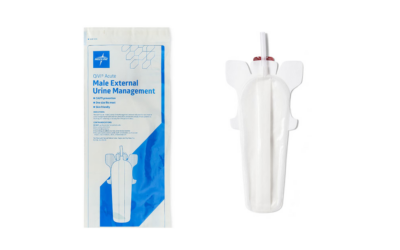By Kevin Schreiber, Global Director of Healthcare Products for Huntair, Inc.
Hospital operating rooms are among the most infection-sensitive environments in health care facilities. Surgical procedures increase patient vulnerability to pathogens transmitted from surgical personnel, surgical equipment, the air and a patient’s own skin flora. Despite advancements in surgical techniques and infection-prevention methods, two out of every 100 surgeries in the U.S. result in surgical site infections (SSIs), according to the Centers for Disease Control and Prevention (CDC). The CDC reports that SSIs represent 20 percent of all health care acquired infections (HAIs) – the U.S. Department of Health and Human Services (HHS) reports an estimated 290,485 incidences in 2009 alone.
Impacts on quality of care include morbidity, extended hospital stays and, in extreme cases, mortality. Of the incidences in 2009, 13,088, or 4.5 percent, resulted in death. When SSIs do occur, the impact on healthcare costs can be significant. Since October 1, 2008, Medicare no longer reimburses if a selected condition is listed on the claim and was not present on admission2, placing the financial burden of SSIs on hospitals. On average, the cost to hospitals per SSI is $25,546, according to the CDC and HHS, resulting in an additional $7.4 billion in annual health care costs that Medicare will no longer reimburse.
Sources of SSIs
An estimated 40 to 60 percent of SSIs are considered preventable based on current medical practice and technology, as reported in Clinical Infectious Diseases. The Center for Healthcare Design (CHD) estimates that more than 30 percent of SSIs are caused by airborne pathogens. The primary sources of bacteria transmitted to the surgical site through the air are squames, or skin scales. Approximately 1.15 × 106 to 0.9 to 108 squames are generated in a typical two to four hour surgical procedure, according to a study published by the American Society of Heating, Refrigerating and Air-Conditioning Engineers (ASHRAE). This can occur in spite of proven hygiene-related prevention practices, suggesting that airborne-related contamination control offers one area that could play a larger role in preventing SSIs.
Rethinking the design of the surgical setting to benefit from cleanroom standards
Current requirements for airflow conditions in hospital operating rooms are regulated by ASHRAE Standard 170-2008. (Table 1 lists the basic elements applying to operating rooms.) While this standard contains airflow requirements such as the number of exchanges and the temperature and humidity of the air, it does not address airborne contaminant levels.
Table 1 – Summary of ASHRAE Standard 170-2008: Ventilation of Healthcare
Facilities Requirements for Surgical Suites
| Positive pressure differential of +0.01” wc |
| Individual temperature control |
| Airflow shall be unidirectional, downwards |
| Array shall extend a minimum of 12” beyond the footprint of the surgical table on each side |
| < 30% of the array area shall be used for non-diffuser uses |
| At least two low side wall return or exhaust grilles spaced at opposite corners |
| The bottom of these grilles installed approximately 8” above the floor |
Conversely, the standards for airborne contaminant control are extremely well defined in a cleanroom of a typical semiconductor manufacturer or for other critical manufacturing processes (Table 2).
Table 2 – ISO Standard 14644 Cleanroom Class Limits
|
ISO Class |
Maximum Number of Particles in Air |
|||||
|
(particles in each cubic meter equal to or greater than specified size) |
||||||
|
Particle size |
||||||
|
> 0.1 μm |
> 0.2 μm |
> 0.3 μm |
> 0.5 μm |
> 1 μm |
> 5 μm |
|
|
1 |
10 | 2 | ||||
|
2 |
100 | 24 | 10 | 4 | ||
|
3 |
1,000 | 237 | 102 | 35 | 8 | |
|
4 |
10,000 | 2,370 | 1,020 | 352 | 83 | |
|
5 |
100,000 | 23,700 | 10,020 | 3,520 | 832 | 29 |
|
6 |
1,000,000 | 237,000 | 102,000 | 35,200 | 8,320 | 293 |
|
7 |
352,000 | 83,200 | 2,930 | |||
|
8 |
3,520,000 | 832,000 | 29,300 | |||
|
9 |
35,520,000 | 8,320,000 | 290,300 | |||
Ranging from Class 1 to 9, cleanrooms are designed to allow no more than a specific number of particles of a specific size to be present in a space at any given time, while accounting for ancillary equipment such as lighting, machinery, people and other elements in the space that could otherwise work against creating the desired environment. Aseptic procedures for personnel entering the space can be equal to or greater than those required for doctors and nurses entering an operating room.
ISO requirements have been adopted by companies to help avoid billions of dollars in lost revenue, warranty costs, back charges and liability due to a catastrophic product failure resulting from contaminants in their sensitive manufacturing environments. It would be foolish to equate the value and well-being of a human life with that of a semiconductor chip or pharmaceutical drug, but a tremendous imbalance exists in the requirements for each critical environment.
The technology and design practices already exist
So what could be done for the operating room environment to bridge the gap? The obvious answer is to adopt more stringent requirements and design practices that are inclusive of contamination control, similar to those used in cleanroom environments.
To illustrate this concept, compare the use of laminar airflow in operating room and cleanroom settings. Laminar airflow is intended to provide uniform, directional airflow that essentially “moves” particles floating in the airstream away from areas that are intended to be contaminant-free (i.e. the sterile field) to where they can be disposed of and contained (through the return ducts and filtration system). Turbulence is undesirable because particles are allowed to float undirected, eliminating any ability to predict where they may settle.
Laminar airflow is prevalent in both settings, but the difference in designs can be radical. In ISO Class 1 to Class 4 cleanroom environments, nearly every square inch of ceiling space is dedicated to providing laminar airflow to minimize turbulence and produce predictable movement of particles away from the sterile field. Conversely (Figure 1), hospital operating room laminar flow systems typically consist of multiple laminar flow diffusers arranged in a variety of arrays to optimize airflow. In many cases, the arrangement of these diffusers—with large gaps for light troffers and other components—would be unacceptable by ISO Class 1 to Class 4 cleanroom standards, and ultimately create, versus minimize, turbulence in the space.

Figure 1. A conventional operating room air delivery system (left) is compared to a system designed around optimizing laminar airflow over the patient (right). Note the large gap in airflow delivery over the patient in the conventional system.
Table 3 provides a comparison of a minimum diffuser array, as required per ASHRAE Standard 170 and American Institute of Architects (AIA) guidelines, to a single diffuser array designed to achieve laminar flow in the sterile field while keeping all other design parameters equal. Using Computational Fluid Dynamic (CFD) modeling, this comparison illustrates the difference in how the two systems perform with respect to providing laminar airflow.

- Table 3 – Comparison of Laminar Flow Designs
Minimum array design Single diffuser design
35 fpm 35 fpm
62° entering air 62° entering air

Turbulence: While the minimum array design contains laminar diffusers, it does not create a laminar flow environment in the space (left). The single diffuser design does achieve the desired effect of minimizing turbulence in the sterile field (right).

Better performance as airflow is increased: Increasing airflow to the space by as little as 15 fpm to 50 fpm in both the minimum diffuser array (left) and the single diffuser design (right) provides improved performance in both systems. This phenomenon is consistent with cleanroom applications where as much as 100 fpm may be required for a Class 1 cleanroom.
Looking beyond today’s standards
Given the quality of care and economic consequences of SSIs, consideration should be given to rethinking the requirements for the operating room to include some measure of contamination control and aerobiological quality standards. The technology and design practices have already been successfully implemented by critical-process manufacturers facing similar consequences in a different context. Challenges exist in the operating room setting—booms, lights and other components are obstacles that affect performance—but facing them head-on to advance the typical operating room beyond current design standards can be a worthy venture toward improving the quality of patient care and the financial bottom line of any health care facility.










Trackbacks/Pingbacks